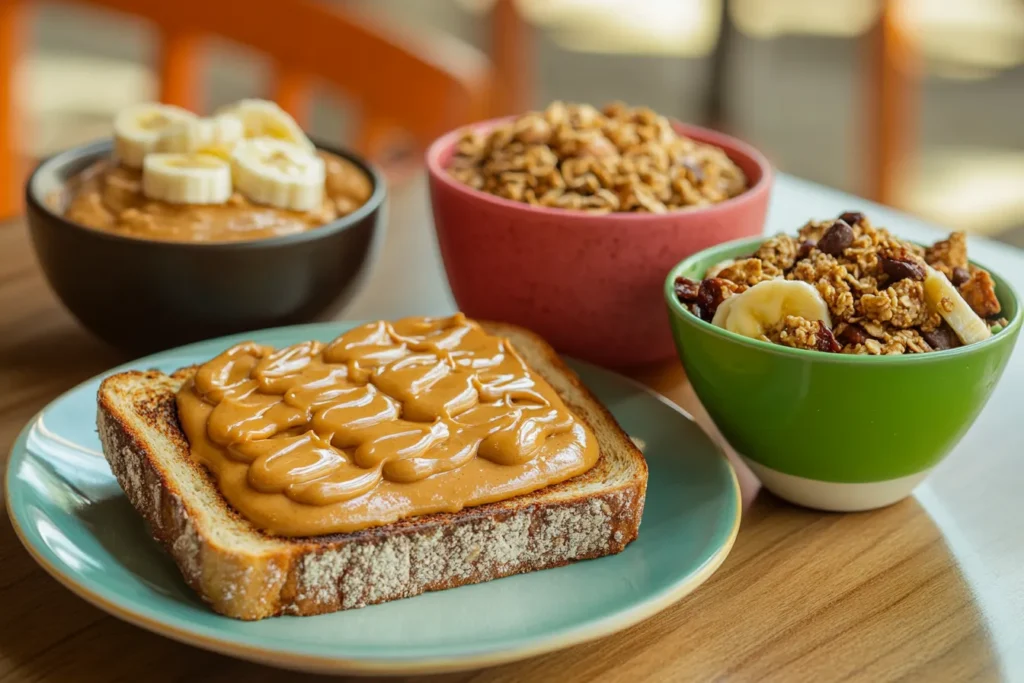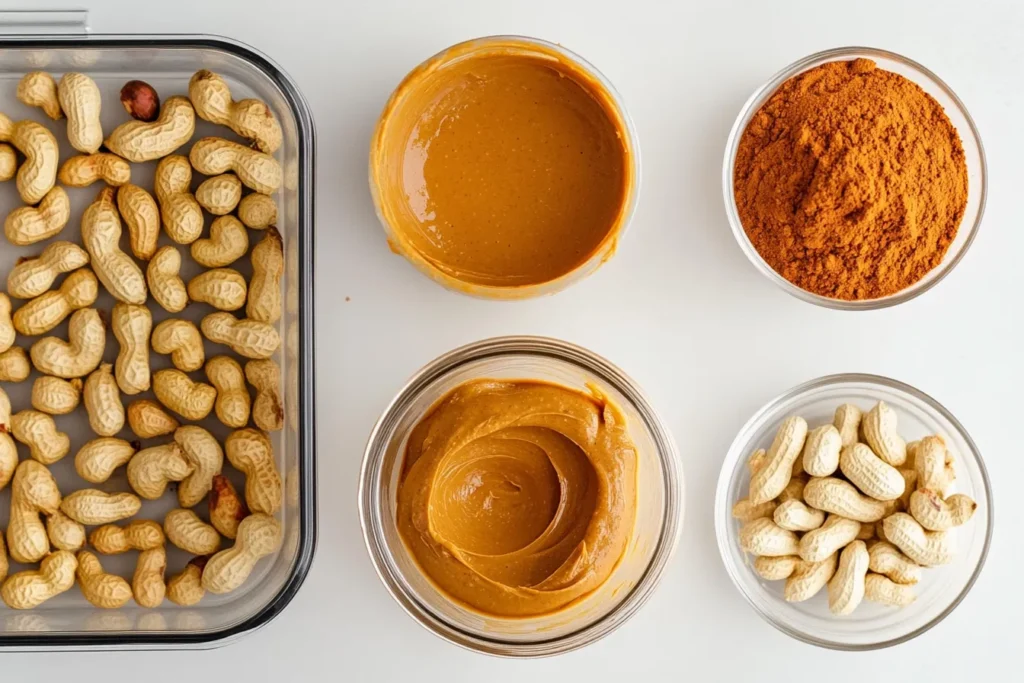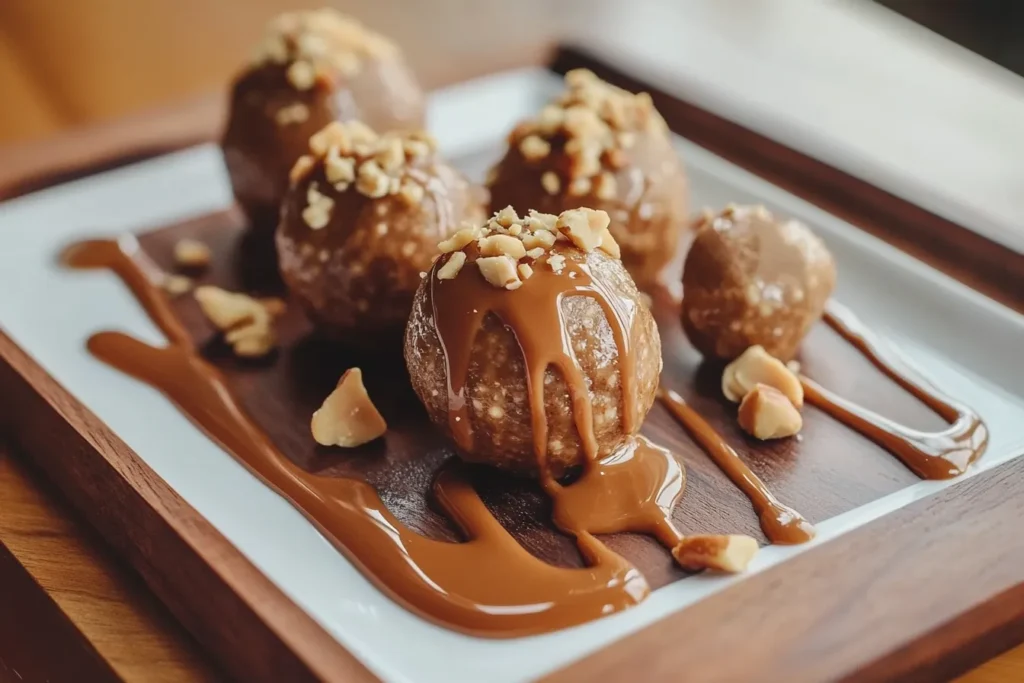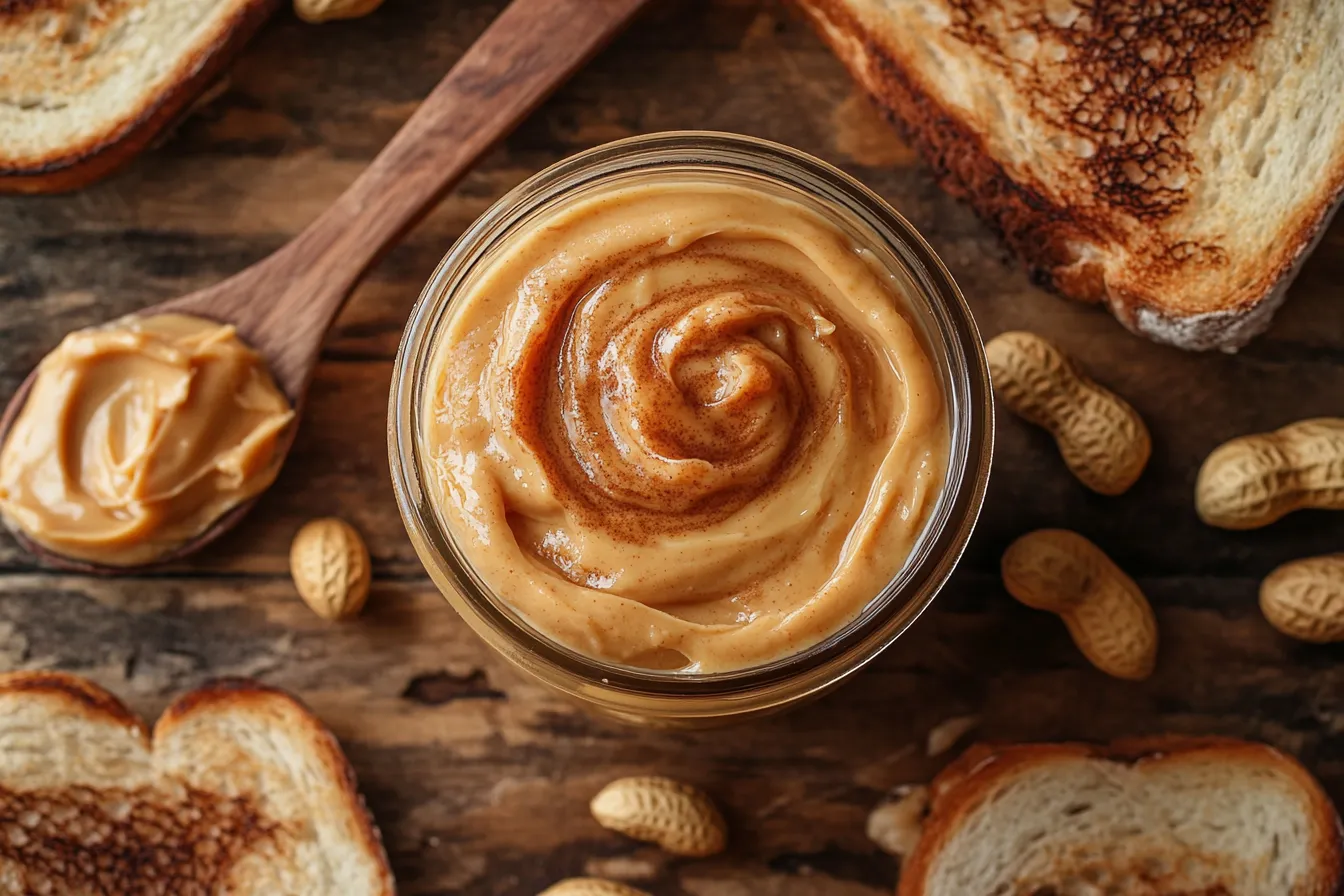Natural peanut butter is a nutritional powerhouse and versatile ingredient, perfect for both healthy lifestyles and indulgent treats. With its simple ingredients and numerous benefits, it has become a kitchen favorite. This guide explores its history, nutrition, production, and creative uses, offering everything you need to know about natural peanut butter.
What Is Natural Peanut Butter?
Natural peanut butter is made with minimal ingredients, usually just peanuts and salt, without added sugars, oils, or preservatives. Its pure composition highlights the roasted peanut flavor, though it may separate due to the lack of stabilizers—a quick stir easily fixes this.
With the rise of clean eating, natural peanut butter has become a favorite for its simplicity and health benefits. Whether on toast, in smoothies, or straight from the jar, its rich, nutty flavor is truly irresistible.
History and Origin
Natural peanut butter’s roots trace back to ancient South America, where peanuts were cultivated and ground into a paste as early as 1500 BCE.
In 1895, Dr. John Harvey Kellogg patented a peanut butter-making process, originally intended as a health food. His innovation laid the foundation for today’s natural peanut butter.
Evolving over time, natural peanut butter remains true to its origins—simple, wholesome, and beloved by health-conscious consumers worldwide.
Differences Between Natural and Regular Peanut Butter
The main difference between natural and regular peanut butter is the ingredients. The first one contains just peanuts (and sometimes salt), while regular varieties often include sugar, palm oil, and stabilizers for sweetness and shelf stability.
Natural peanut butter is healthier, with fewer calories, no trans fats, and no unnecessary additives, making it ideal for whole-food diets like keto or paleo. It has a grittier texture and bold, roasted flavor, unlike the smoother, sweeter profile of regular peanut butter.
For those seeking pure nutrition and authentic taste, natural peanut butter is the better choice.
Nutritional Breakdown
Natural peanut butter isn’t just tasty—it’s packed with nutrients that make it a great addition to a healthy diet. Let’s break down its key components:
In terms of main nutrients, peanut butter provides a good mix of protein, healthy fats, and carbs. A typical 2-tablespoon serving includes:
- Protein: 7–8 grams, great for muscle repair and growth.
- Fats: 16 grams, mostly heart-healthy fats.
- Carbohydrates: 6–7 grams, with 2–3 grams of fiber to help digestion.
It’s also rich in other important nutrients, such as:
- Vitamins: Vitamin E for its antioxidant properties and B vitamins for energy.
- Minerals: Magnesium for strong bones and muscles, and potassium for healthy blood pressure.
With its nutrient-packed profile, peanut butter fits well into a balanced diet. In fact, whether you’re fueling a workout or even enjoying a quick snack, it’s an excellent choice.
Health Benefits of Consuming Natural Peanut Butter

The advantages of incorporating peanut butter into your diet extend far beyond its delicious flavor. Adding it to meals or snacks can positively impact your overall health.
Heart Health Benefits
The healthy fats in peanut butter are great for your heart. These fats help lower bad cholesterol (LDL) and raise good cholesterol (HDL). Its magnesium and potassium also support healthy blood pressure and reduce the risk of heart problems.
Weight Management
Surprisingly, peanut butter can help manage weight. Its protein and healthy fats keep you full, therefore making it easier to avoid overeating. Additionally, pairing a small serving with fruits, whole grains, or vegetables can curb cravings and even provide lasting energy.
Rich Source of Protein and Energy
Peanut butter is a great energy source, especially for active people. The mix of protein and healthy fats gives you long-lasting fuel, while its vitamins, minerals, and calories provide the nutrients your body needs.
Thanks to its unique ability to support heart health, manage weight, and provide lasting energy, natural peanut butter is a small food that truly packs a big punch.
Potential Risks and Allergies Associated with Peanut Butter
While natural peanut butter has many benefits, it’s essential to be aware of potential risks, especially for those with allergies or specific dietary needs.
- Common Allergens
Peanut allergies are one of the most common food allergies worldwide. In fact, even small amounts can cause serious reactions in some people. For instance, symptoms may range from mild itching to severe reactions like hives or trouble breathing. Therefore, those with peanut allergies should avoid all peanut-based products. - Overconsumption Risks
While healthy, peanut butter is high in calories. Eating too much can lead to weight gain, especially if portion sizes aren’t controlled. Its fat content, though beneficial, should be balanced with other healthy fats for a well-rounded diet.
By carefully eating peanut butter in moderation and also being aware of allergies, you can enjoy all its benefits while avoiding any drawbacks.
The Simple Process Behind Peanut Butter Production
Making this spread is simple and uses minimal processing. High-quality peanuts are roasted to bring out their natural flavor, then cooled and ground into a smooth or chunky texture.
A little natural oil, like peanut oil, may be added for creaminess, but no artificial additives or preservatives are used. Unlike regular versions, which often have added oils and sweeteners, this type keeps things simple and sometimes separates with oil rising to the top.
Overall, this easy process keeps the true taste and nutrients of peanuts intact, which is why it has become a popular choice for health-conscious people.
Common Ingredients
At its core, this spread contains only two main ingredients: peanuts and, sometimes, natural oils like peanut oil. This simple approach sets it apart from more processed options.
Peanuts: The key ingredient, peanuts are roasted to bring out their rich, nutty flavor.
Natural Oils: A small amount of oil is sometimes added for better texture, but it’s always free of harmful fats like trans fats.
What’s missing? Additives like sugar, salt, artificial oils, or preservatives. By keeping it simple, this spread stays clean and fits well with a healthy, natural diet.
Understanding Labels: What to Look For
Choosing the right jar of peanut butter can be tricky with so many options. Learning how to read labels helps you find a truly good, simple product.
Identifying Real Peanut Butter
Look for short ingredient lists—ideally, just peanuts and a little salt. Avoid jars with added sugars, oils, or thickeners, as these mean it’s more processed. Oil sitting on top of the jar is a good sign that it’s pure.
Key Terms and Labels
Check for words like “organic,” “non-GMO,” or “natural” on the label to ensure quality. Certifications like USDA Organic or Non-GMO Project Verified also show high production standards.
By choosing jars with simple, clear ingredients and trusted labels, you can enjoy the clean and pure taste of real peanut butter.
Culinary Uses and Recipes
Cooking and Baking with Peanut Butter
Peanut butter isn’t just for spreading on toast—it’s a flexible ingredient that works well in both sweet and savory dishes with its rich, nutty flavor.
Some popular uses include:
Cookies: This creamy spread adds softness and a strong peanut flavor to classic treats like cookies or brownies. For more inspiration, try this classic Quaker oatmeal cookie recipe that pairs beautifully with peanut butter.
Smoothies: A spoonful mixed with bananas, almond milk, and honey makes a smooth, protein-packed drink.
Sauces: Peanut butter-based sauces are great for noodles, cooked veggies, or grilled meats. Mix it with soy sauce, lime juice, and garlic for a quick, tasty topping.
When using it in recipes, remember it’s less sweet than regular peanut butter. You may need to adjust the sugar or add a little honey to balance the taste. Its thinner texture might also mean using slightly less liquid in baking recipes.
Natural Peanut Butter Recipe

Ingredients
- 2 cups roasted peanuts
- 1–2 tablespoons natural oil (e.g., peanut oil)
- Optional: pinch of salt, honey, or sweetener
Step-by-Step Instructions
- Prepare the Peanuts: Place 2 cups of roasted peanuts into a food processor. Ensure the peanuts are unsalted if you prefer to control the salt content in the final product.
- Blend the Peanuts: Begin processing the peanuts on high. They’ll transform from a crumbly texture to a thick paste and, eventually, a creamy consistency. Be patient—it may take 3–5 minutes, depending on your food processor.
- Add Oil Gradually: If the mixture seems too thick, add 1–2 tablespoons of natural oil gradually. This step helps achieve a smooth, spreadable texture.
- Customize the Flavor: Taste the peanut butter. If desired, add a pinch of salt for seasoning or a drizzle of honey for sweetness. Blend briefly to incorporate.
- Store the Peanut Butter: Transfer the finished peanut butter to an airtight container or jar. Store it in the refrigerator to extend its shelf life and prevent separation. Stir before use if the oil separates.
Creative Ways to Use Peanut Butter in Your Diet
Incorporating peanut butter into your meals can be as simple or inventive as you like. Its versatility makes it a staple in kitchens everywhere.

Breakfast Ideas: Spread it on whole-grain toast, pair it with a banana, or mix it into oatmeal for a protein-rich start to the day.
Snacks: Dip apple slices, celery sticks, or pretzels into peanut butter for a quick, satisfying treat. It also pairs well with rice cakes for a crunchy, light snack.
Main Courses: Create creamy Thai-inspired sauces with peanut butter for noodles, tofu, or chicken skewers.
Desserts: Add it to no-bake energy balls, protein bars, or rich, fudgy treats. For a fun twist on healthy desserts, check out this cottage cheese cookie dough recipe for a protein-packed treat.
This flavorful spread brings variety to any meal, making it easy to enjoy in countless ways.to blend seamlessly into sweet and savory dishes makes natural peanut butter a must-have ingredient for any meal. With a little creativity, the possibilities are endless!
How to Properly Store Your Peanut Butter
Proper storage of natural peanut butter ensures it stays fresh and maintains its creamy texture.
- Refrigeration vs. Pantry Storage
- Storing natural peanut butter in the pantry keeps it spreadable but may shorten its shelf life.
- Refrigerating it can prevent oil separation and extend its freshness, but it may require a bit more effort to spread.
- Tips to Prevent Oil Separation
- Stir the peanut butter thoroughly after opening to mix the oils evenly.
- Store the jar upside down in the pantry or refrigerator to minimize separation.
- Always use a clean utensil to avoid introducing moisture or bacteria.
By following these simple storage tips, you can enjoy your natural peanut butter for weeks—or even months—without compromising its quality.
Making Your Own Natural Peanut Butter at Home
Making homemade natural peanut butter is an easy and cost-effective way to enjoy this nutritious spread. Plus, you have complete control over the ingredients.
- Benefits of Homemade vs. Store-Bought
- Homemade versions are free from preservatives and additives.
- You can customize the flavor and texture to suit your preferences.
- It’s often more affordable than premium store-bought brands.
- Simple Recipe and Customization Tips
- Recipe: Blend roasted peanuts in a food processor until creamy. Add a drizzle of peanut oil if needed. Adjust flavor with a pinch of salt or honey.
- Customization: Experiment with add-ins like cinnamon, cocoa powder, or flaxseeds for a unique twist.
Homemade natural peanut butter is fresher, healthier, and tailored to your taste—a win-win for any peanut butter lover.
Frequently Asked Questions (FAQs)
Is this type of peanut butter healthier than the regular kind?
Yes, this unprocessed version is typically healthier because it contains fewer additives. Unlike conventional options, which often include added sugars, hydrogenated oils, and preservatives, this variety keeps it simple with just peanuts (and occasionally salt). It’s an excellent choice for those prioritizing clean, whole-food options.
Does natural peanut butter need to be refrigerated?
Refrigeration isn’t mandatory, but it’s highly recommended to preserve freshness and prevent oil separation. While pantry storage keeps the peanut butter more spreadable, refrigeration extends its shelf life and prevents spoilage, especially in warmer climates.
Is it OK to eat natural peanut butter every day?
Absolutely! Eating natural peanut butter daily can be part of a balanced diet. It’s a rich source of protein, healthy fats, and essential nutrients. However, portion control is key—stick to 1–2 tablespoons per day to avoid overconsuming calories.
Can I use natural peanut butter in baking?
Yes, natural peanut butter works wonderfully in baking. Its rich flavor enhances cookies, brownies, and cakes. Just keep in mind that its thinner consistency may require adjustments in liquid measurements for certain recipes.
How long does natural peanut butter last?
Unopened jars of this unprocessed spread can last up to a year if stored in a cool, dry pantry. After opening, it generally stays fresh for 3–6 months when refrigerated. Always check for signs of spoilage, such as unusual odors or mold, before consuming.
Is natural peanut butter safe for people with peanut allergies?
Unfortunately, no. Since it is made from peanuts, it is not suitable for individuals with peanut allergies. Alternatives like almond butter or sunflower seed butter are safer choices for those with allergies.
Summarizing the Importance of Natural Peanut Butter in a Healthy Diet
This wholesome spread is not just delicious but also packed with nutrition. Rich in protein, healthy fats, and essential nutrients, it promotes heart health, aids muscle recovery, and boosts energy levels. Its versatility makes it easy to enjoy in everything from breakfasts to desserts.
By choosing an unprocessed variety over processed alternatives, you opt for clean, wholesome ingredients free from unnecessary additives. Whether spread on toast, blended into smoothies, or enjoyed by the spoonful, it’s a satisfying and healthy choice.
Make the switch to this simple, nutritious option—a tasty step toward a healthier lifestyle!

